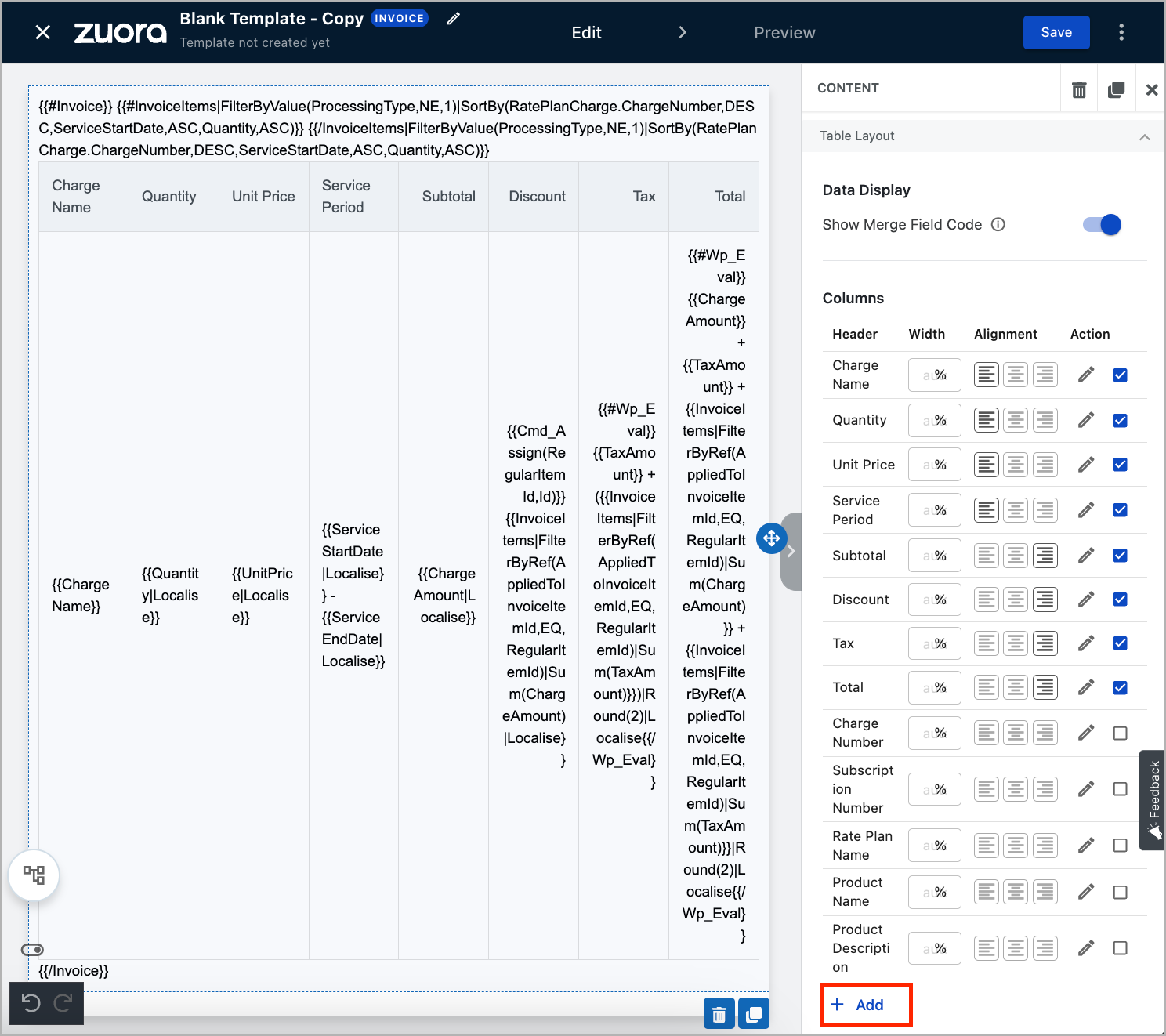Zuora Release 2023.12.R1
Welcome to the release notes for Zuora Release 2023.12.R1. This article is a consolidated page of release notes for the following Zuora products:
For the latest release notes of Zuora Revenue, see Zuora Revenue release notes.
Release schedule
To receive notifications about releases, join Release Notifications in Zuora Community. For the planned release schedule, see Zuora Release Management.
Zuora Billing
 Product Catalog
Product Catalog
Enhancement to Attribute-based Pricing
The Attribute-based Pricing feature supports the following discount charge models from this release:
- Discount - Fixed Amount
- Discount - Percentage
With this enhancement, you can create and update charge definitions for product rate plan charges based on the corresponding discount charge model.
 Orders and Subscriptions
Orders and Subscriptions
UI Enhancements to Owner Transfer order action
Previously, during subscription creation, if the Bill To Contact and Sold To Contact fields were populated with the default value Default Contact from Account, you could transfer the invoice owner and subscription owner through the Owner Transfer order action, respectively. However, if the fields were specified, even though the specified contacts might be the default bill-to and sold-to contacts of the account, you were not allowed to transfer the owners.
You are now allowed to transfer the invoice owner and subscription owner when the Bill To Contact and Sold To Contact fields have specified contacts. You can also update the bill-to and sold-to contacts during the owner transfer. If you do not specify bill-to and sold-to contacts after the owner transfer, the default value Default Contact from Account is used.
For more information, see Change owners of subscriptions.
Enhancements to Delivery Pricing charges
Previously, the Qty or Quantity field was used to reflect the number of deliveries for the Delivery Pricing charges. However, the field value did not reflect the actual quantity of the charge itself.
A new field called Number of Deliveries is now available, dedicated to the Delivery Pricing charges. This change impacts charge models as follows:
- For the Delivery Pricing charge model, the value of the Number of Deliveries field is calculated based on the charge's effective duration and the Delivery Pricing charge's delivery schedule, and the value of the Qty or Quantity field is always 1.
- For other charge models, the value of the Number of Deliveries field is null.
This change applies to the Subscription, Orders, Invoice Item, and Credit Memo Item objects in the following areas:
- API and UI
- Data source
- Data query
- Metrics
- Rating
Enhancements to Update Product order action
We added the originalListPrice field under the updateProduct order action in the following operations for the flat fee and per unit charge models:
- Preview an order
- Preview an order asynchronously
- Create an order
- Create an order asynchronously
- Update an order
You can now update and preview the originalListPrice field through the above operations.
The enhancements allow you to set the list price of a subscription rate plan charge when you update the product. If you do not set this field, by default, the system carries over the list price value from the last rate plan charge segment.
Enhanced Discount generally available
The Enhanced Discount feature, initially released as an EA feature in 2023.10.R1, is now generally available. This feature increases the accuracy and flexibility of the discount period and discount scope applied to the discount charges. For more information, see Manage Enhanced Discount and Enhanced Discount use cases.
Along with the general availability of this feature, we now add the Stacked field to the UI. Previously, in 2023.11.R1, this field was only available in the API. You can check whether a percentage discount is stacked or non-stacked through this field.
You can check this field through the following methods:
- In the Associated Subscriptions section of the order details page, click the Order Actions tab and expand a discount charge to check this field in the Charge pricing section.
- In the Included Products section of the subscription details page, expand a discount charge to check this field in the Charge Amount section.
 Usage and Rating
Usage and Rating
Enhancements to support proration in product rate plan charge level for recurring charges
A Proration option is introduced which allows you to select the proration behavior for charges. The proration option under product rate plan charge level(recurring charges), allows you to select the proration behavior for a specific charge instead of using the tenant level proration logic configured in the billing setting.
For more information, see Proration and Proration option for recurring charges.
 Invoicing and Tax
Invoicing and Tax
Enhancements to Billing Schedule feature for milestone billing
We have enhanced the Billing Schedule feature to seamlessly support milestone billing scenarios, ensuring a more user-friendly experience.
- Flexible charge selection
When creating invoice schedules, you can now choose one or multiple one-time or recurring charges from your subscriptions for billing. With this enhancement, you can bill specific charges at custom intervals, while billing others in regular billing cycles.
You also have the flexibility to create multiple invoice schedules for distinct subscriptions contained in the same order, ensuring precise alignment with the contract structure.
- Percentage-based amount
When creating invoice schedules, you can now specify a percentage of the total amount for each invoice schedule item rather than a fixed amount.
This enhancement facilitates aligning your billing with project milestones. For example, you can create an invoice schedule for a three-milestone project:- Bill 10% of the total amount for milestone 1 through the processing of invoice schedule 1.
- Bill 20% of the total amount for milestone 2 through the processing of invoice schedule 2.
- Bill 70% of the total amount for milestone 3 through the processing of invoice schedule 3.
These enhancements empower you to tailor your billing schedules to unique project requirements, providing greater flexibility and control.
For more information about some common scenarios, see the following articles:
- Create percentage-based invoice schedules for professional services during project milestone billing
- Create multiple invoice schedules for a single order within a multiyear contract
For a summary of REST API updates specific to these enhancements, see the "API updates specific to the Billing Schedule feature" section in 2023 API Changelog (November 24, 2023).
Enhancements to E-Invoicing feature
We have introduced the following enhancements to the E-Invoicing feature, designed to simplify and enhance your e-invoice file template development experience through the Zuora UI.
- Built-in default templates
- You can now jumpstart e-invoice file template creation with new built-in default templates tailored for countries like India, Italy, and Saudi Arabia.
- You can also customize these templates based on your unique data configurations, significantly reducing the effort compared to starting from scratch.
- Data schema and functions for templates
- You can easily access a comprehensive view of all supported objects, fields, and functions available for your templates.
- This enhancement saves you from memorizing object or field names, functions, or their structures.
These enhancements empower you to develop e-invoice file templates more efficiently, providing a smoother and more intuitive experience.
Addition of new columns to pre-defined components
Previously, the HTML source code had to be duplicated each time to create a new column within a template. As a result, there was no easy option to incorporate columns of your preference into the HTML template, aside from the pre-configured ones. Now, you can add columns to pre-defined components while adding an HTML template using the new Add button for the following tables:
- Charge Details
- Usage Details
- Data Table

Enhancements to Multiple Currencies feature in UI
Previously, the enhancements to multiple currencies available through API are now seamlessly integrated into the UI from this release onwards. The following enhancements are available, providing flexibility and control over your transactions.
- Subscription creation in Order UI:
- You can specify the currency for a subscription during the subscription creation process via the Order UI.
- The multiple currencies feature allows you to transact in any currency, irrespective of the default currency.
- Credit and debit memos:
- When creating standalone credit or debit memos, you can now choose the currency for these transactions.
- The default currency value is set to the account's default currency. Now, you can select any active currency from your billing settings.
- Configurable tax apps and Direct Avalara integration:
- Configurable Tax Apps templates now support currency at the billing document level.
- Both Configurable Tax Apps and Direct Avalara Integration now support multiple currencies.
For more information, see Multiple Currencies.
Enhancements to preventing over-crediting
Previously, we supported preventing over-crediting only for the Delivery Pricing charges in 2023.10.R1. The feature prevents your total credit amount from exceeding the total amount of the whole invoice or the amount of an invoice item, depending on your billing setting.
We now make the following enhancements:
- Expand the validation and prevention to all charge models.
- Add a new billing rule called Include billing engine credits in total available credit
When creating ad hoc credit memos or delivery adjustments after the billing engine generates credit memos, you can set this billing rule to Yes or No to take into account the existing billing engine-generated credit memos in over-crediting validation and prevention or not, as follows:
- If you set this field to Yes, depending on the setting of the Available to credit validation for credit memos billing rule, the results are as follows:
- When Header-level only is selected, both the billing engine-generated credit memos and credit memos generated from other sources are counted in the Total Available To Credit amount of the whole invoice.
- When Header and Item-level is selected, both the billing engine-generated credit memos and credit memos generated from other sources are counted in the Available to Credit amount of an invoice item.
- If you set this field to No, the billing engine-generated credit memos are not taken into account in over-crediting validation.
For more information, see Define billing rules, Enable preventing over-crediting, and Examples of preventing over-crediting for Delivery Pricing charges.
Zuora Payments
 Payments
Payments
Soft delete available for a few objects with 0 amount payment records
Previously, the PaymentPart and PaymentPartItem object records were hard deleted, and the users could not use the data for the sync-up process as they did not exist in the Zuora system. Now, the PaymentPart and PaymentPartItem object records are soft deleted when the amount in the record is 0, enabling you to retain them within the Zuora system for later use.
For more information, see Invoice Settlement object model.
Enhancements to Payment Page 2.0 accessibility
We have made the following enhancements to the Payment Page 2.0 solution to make the page content more accessible to people with visual disabilities. These enhancements are aligned with Web Content Accessibility Guidelines (WCAG) 2.0.
- Asterisks (*) are added to indicate the required fields, so that the required fields can be properly detected by the screen reader.
- Proper textual names, roles, and status attributes are available in the element tags. This makes the element correctly detected by the screen reader.
- The
Errorkeyword is added to the error messages that occur when the input of the field is invalid, so that the message can be properly detected by the screen reader. - The content focus indicator can be correctly activated and moved during page navigation. Interactive functionalities are operable with the keyboard.
These enhancements are automatically applied to new hosted payment pages. If you want your existing pages to adapt to these enhancements, see Adapt to enhanced accessibility support.
Support for making delayed capture of payments through Create an order API operation
To make delayed capture of payments through the Create an order API operation, you can now pass in the following nested fields in the processingOptions > electronicPaymentOptions field:
authTransactionIdgatewayOrderId
For more information, see Create an order in Zuora API Reference.
Support for updating payment status through Zuora UI
We have improved the way to handle payments that are stuck in the Processing status. Previously, we have supported idempotent retry or inquiry call on some gateway integrations to automatically resolve payments stuck in the Processing status. This process usually takes up to 48 hours. Now you can manually update the status of stuck payments on any gateway integrations. If a payment has been stuck in the Processing status for more than 48 hours, you can update the payment status to Processed or Error through Zuora UI, based on the information you collected from the gateway side.
For more information, see Update the status of payment stuck in processing.
 Finance
Finance
Enhancement to Revenue schedule
On the Revenue Workbench landing page, you can now view the following details:
- Total revenue schedules in progress
- Pending revenue schedules
- Processing revenue schedules
Avoid blank accounting information for standalone invoice and sales order line items
When creating sales order line items or standalone invoices, you must configure default values under the Manage Non-Subscription Items setting and configure accounting codes for standalone invoices and sales order line items.
For more information, see Create sales order line items and Create standalone invoices.
Zuora Central Platform
 Custom Objects
Custom Objects
New section in navigation menu for custom objects
A new section named "Custom Objects" is now available in the left navigation menu in the Zuora UI. All of your custom objects are displayed under this section in the menu.
After clicking a custom object under the Custom Objects section, the detailed page with all records of this custom object is presented.
This change gives you a unified experience in managing Zuora standard or custom objects through the UI.
Additionally, the Platform > Object Manager section replaces the former Platform > Custom Objects section for managing custom fields on custom object definitions.
REST API
For the detailed API documentation, see API Reference.
For a summary of REST API updates and documentation updates in the Zuora API Reference, see 2023 API Changelog.
Quickstart API
From 2022.09.R1, the Quickstart API is available to you if you have the Orders (or Order Harmonization) and Invoice Settlement features enabled in your tenant. The QuickstartAPI allows new integrators to swiftly integrate with Zuora, and it supports essential business use cases.
For the detailed Quickstart API documentation, see Quickstart API Reference.
For a summary of REST API updates and documentation updates in the Quickstart API Reference, see Quickstart API Changelog.
SOAP API
Current WSDL version: 140
For information about how to check your version and download the latest version. see Zuora WSDL.
SOAP API change history
For a summary of updates made to the SOAP API in recent Zuora releases, see Zuora SOAP API Version History.

